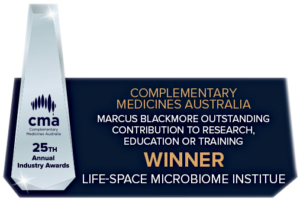The introduction of plastics has provided us with many conveniences over the decades, but not without consequences as new research shows. The increased production and usage of plastics has inevitably resulted in increased exposure, for humans and wider ecosystems. A significant amount of plastic ends up as waste, and a significant amount of plastic waste is in the form of microplastics. These synthetic, solid particles or polymeric matrices, which range in size from one micrometre to five millimetres, have shown the potential to disrupt various micro and macro ecosystems, including the human microbiome(1,2).
Humans can consume up to 5mg of microplastics per week, equivalent to that of three paper clips(3). Once ingested these microplastics are distributed throughout the body to multiple organs and tissues and can be found in the blood supply and stool(4-6). However, the health impacts of microplastic ingestion remain poorly understood.
A recent study investigated the effect of microplastics on physiological responses within humans, specifically measuring the composition of the luminal and mucosal gut microbiota and microbial activity following exposure to microplastics.
The study tested biological markers of four healthy adults over a twenty-one-day time frame using a human intestinal simulation known as Mucosal Artificial Colon (M-ARCOL). The system was inoculated with faecal samples from each of the participants and then held under specific parameter settings to mimic average conditions within the colon of a healthy human(2).
After a stabilisation period of eight days, a microplastic solution was applied to the reactors on day nine which continued each day until the last day of the trial, thus creating an exposure comparison period. Samples were routinely collected from two different points of the machine either daily or every two days, to gather data which represented luminal microbiota and microbiota characteristics(2). Tested markers included gas analysis during the fermentation process, volatile organic compound analysis, total bacteria quantification, and analysis of short chain fatty acids(2).
While overall results varied between the four participants, there were no significant changes observed regarding the production of gas or metabolites by the microbiota, nor were there significant differences seen in any metabolites associated with mucus/epithelium permeability or inflammation. However, one of the key observations from the study was that there was an increase in potentially harmful pathobionts such as Desulfovibrionaceae and Enterobacteriaceae while there was a decrease in Christensenellaceae and Akkermansiaceae, both understood to be beneficial micro-organisms. Furthermore, analysis of the volatile organic compound results showed an increase in the levels of indole,3-methyl, also known as skatole, during the exposure phase. Researchers noted that these results indicated dysbiosis, however recommended further, well-designed trials to confirm their theory(2).
This study provides valuable insights into the effect of microplastics on human health and demonstrates the influence of the environmental exposome on microbiome composition and balance, an important consideration for the health practitioner.
References
- Frias JPGL, Nash R. Microplastics: Finding a consensus on the definition. Marine Pollution Bulletin. 2019 Jan;138:145–7.
- Fournier E, Leveque M, Ruiz P, Ratel J, Durif C, Chalancon S, et al. Microplastics: What happens in the human digestive tract? First evidences in adults using in vitro gut models. J Hazard Mater. 2023 Jan 15;442:130010.
- Senathirajah K, Attwood S, Bhagwat G, Carbery M, Wilson S, Palanisami T. Estimation of the mass of microplastics ingested – A pivotal first step towards human health risk assessment. Journal of Hazardous Materials. 2021 Feb;404:124004.
- Wu P, Siyi L, Cao G, Wu J, Jin H, Wang C, et al. Absorption, Distribution, Metabolism, Excretion and Toxicity of Microplastics in the Human Body and Health Implications. Journal of Hazardous Materials. 2022 Jun 1;437:129361.
- Leslie HA, van Velzen MJM, Brandsma SH, Vethaak AD, Garcia-Vallejo JJ, Lamoree MH. Discovery and quantification of plastic particle pollution in human blood. Environment International. 20

